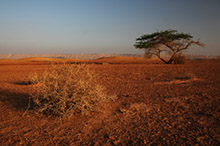Conversation 51: Use of key characters [celebrities for example] in advertising from the point of view of the individual's internalized character board model
In our model, the self includes most of the components of the human soul. The model distinguishes between the "primary self", or the "initial self" which is in fact the basic biological core consisting of a number of innate structures and subject to increasing development during life, this self includes the instinctive emotional and cognitive parts of the person. The exact structure of the primary self and the relationships between its parts still require clarification [see previous conversations]. The primary self uses the memory stores and the abilities of cognition, emotion and more.
On the other hand, the "social self" [consisting of "secondary selves"] is built throughout life, and represents an epistructure that gradually develops from the primary self during the person's exposure to social influence, and consists of the internalization of figures significant to the person, originating from external groups or even imaginary groups (related , for example, to a story, a myth, a movie, etc.) which greatly influenced the person.
It is possible that this social self will also include the personification of objects and agencies most important to a person. We note here that only parts of the self are conscious, while other parts are not. Usually the person is not aware of the fact that the social self consists of influential internalized characters that dictate his attitudes and behavior and recognizes these as arising from his own will.
Below we will discuss the structure of the social self: it consists of "secondary selves" which include the following types: 1) the variety of representations of the "Me" that originate from attitudes and feelings towards the self and its representations at different periods in life 2] representations of internalized figures that originate from the significant figures that the person is exposed to during his life , but as mentioned there may also be imaginary characters represented in books, movies, etc. that had a great impact on the person. 3] internalized representations of "subculture" [subculture refers to social influences in the environment in which a person lives and are not necessarily related to a specific person].

AI-assisted illustration: The Board of Internalized Characters. The large figure expresses the internalized dictator-self
We refer to the social self metaphorically as the "directorate of characters" or more precisely the "directorate of internalized characters." We note that in this internalized board of directors there is usually a hierarchy in which there are more influential and dominant figures that we metaphorically called the "dictator-self or selves" and these figures set the tone and even censor and determine which content, attitudes and behaviors can be included in the board of directors. As mentioned, we will point out again that the person as a whole is not usually aware of the influence of the internalized character board and recognizes its influence as arising from his own desires and attitudes.
We will also note that, as a general rule, the board of directors is very dynamic and there are constant struggles and power relations between the internalized characters that make it up regarding the positions they will express, with the dictator-self or -selves usually dictating the tone.
This is how you can internalize various external characters that influence the person in the "directory of internalized characters", but we will emphasize again that usually the most important internalization is that of what we called the "dictator-self". Here it is about internalizing a character that has a great influence and shapes the person for good and/or bad, that has a great influence on the panel of internal characters that build the social self.
The dictator-self’s attitudes play a central role in making decisions about internalizing information and characters. He decides whether to reject the internalization or, if accepted, in what form it will be internalized. In other words, in a sense, we assume that this influential figure is also a form of internal censorship.
It should be emphasized that these are not concrete hypotheses regarding the presence of internalized figures in the inner world of the individual as a sort of "little people inside the brain", but rather in their representation in different brain areas whose nature and manner of representation still requires further research.
We will also note that although we call this character a "dictator", with the exception of a certain type, its characteristics are not the same as those of a dictatorial ruler in a certain country, but rather that this character is dominant and influential among the "characters’ board".
This model therefore holds that the social self consists of "internalized key figures [usually human], usually referring to the significant people in a person's life who have played a central role in shaping the individual's beliefs, values and self-concept. These figures may include family members, friends, mentors , teachers or any other influential person who left a lasting impression on the person. Sometimes, these will also include historical, literary and other figures who left a noticeable mark on the person and were internalized by him.
The term "internalized" implies that the influence of these key figures has been absorbed and integrated into the individual's thoughts, attitudes, and behaviors. This internalization occurs through the process of observing, interacting with, and learning from these important people. As a result, the individual may adopt certain values, perspectives, and approaches to life that reflect those of the influential figures.
These internalized figures can serve as guiding forces in decision-making, moral thinking and emotional regulation. Positive influences can contribute to a person's well-being, security and resilience, while negative influences can lead to internal conflicts or challenges in personal development.
 Prof. Joseph Levine, M.D. is an emeritus associate professor in the Division of Psychiatry, Faculty of Health Sciences, Ben Gurion University in Israel. Prof. Levine is a certified psychiatrist with clinical experience in controlled trials of adult psychiatric disorders and in psychotherapy. He was awarded a NRSAD independent investigator grant for the study of Creatine Monohydrate in psychiatric disorders -- mainly Schizophrenia. He resides and treats patients in Tel Aviv and all of central Israel.
Prof. Joseph Levine, M.D. is an emeritus associate professor in the Division of Psychiatry, Faculty of Health Sciences, Ben Gurion University in Israel. Prof. Levine is a certified psychiatrist with clinical experience in controlled trials of adult psychiatric disorders and in psychotherapy. He was awarded a NRSAD independent investigator grant for the study of Creatine Monohydrate in psychiatric disorders -- mainly Schizophrenia. He resides and treats patients in Tel Aviv and all of central Israel.
